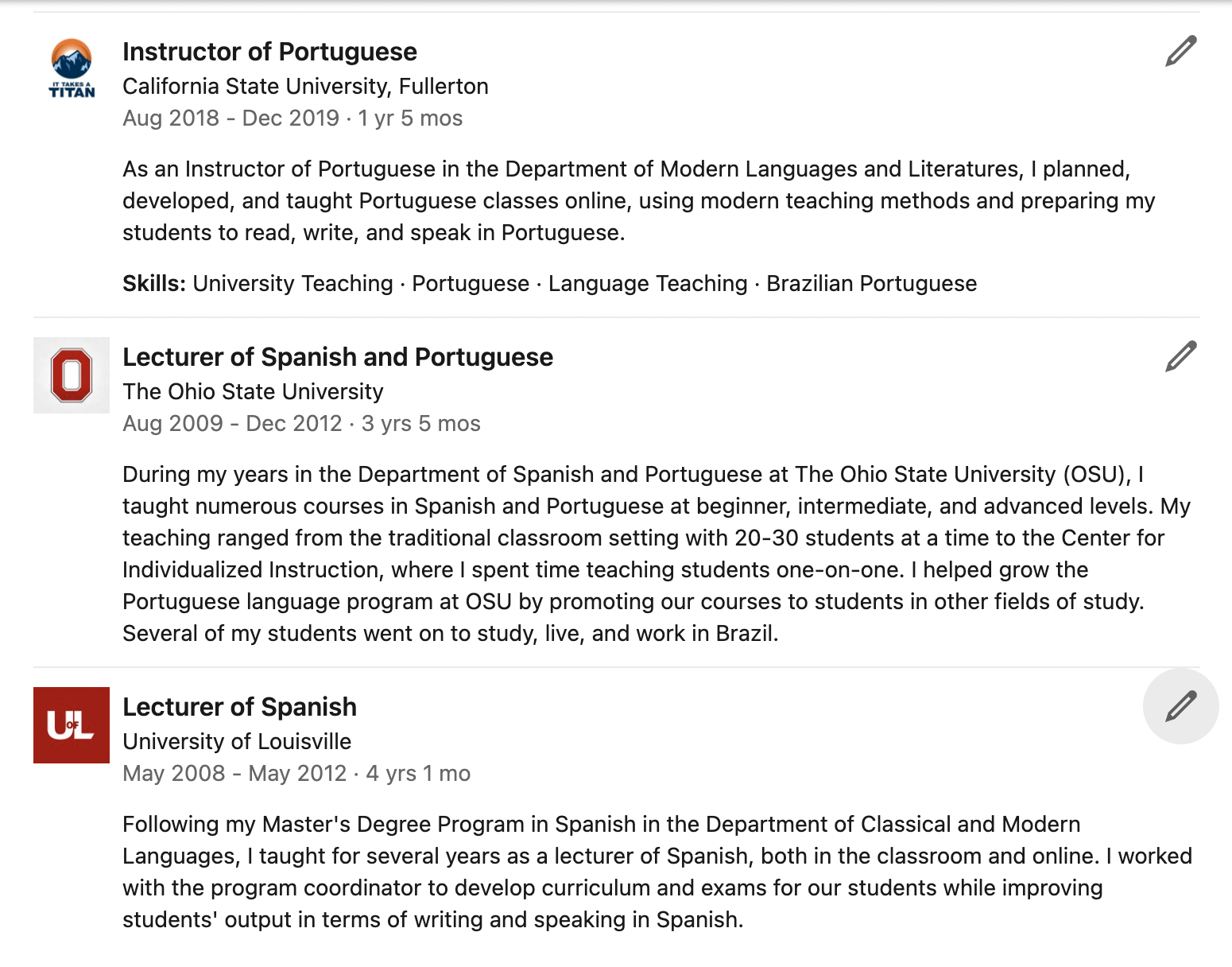5 Tips for Making the Most of the Experience Section of Your LinkedIn Profile
Most professionals have a LinkedIn profile these days. Yet, more than 45% of people who have one admit that theirs has become outdated.
It happens.
Luckily, there's a way to resuscitate your LinkedIn presence, and perhaps surprisingly, it might be worth starting with one section of your profile that many people put little time into.
Most people know their profile headline — the section that appears under your name as a title and describes what you do — and the About section are important to get right.
However, the Experience section is one that's often left to collect dust. Many people forget to update it or aren't even sure what's relevant or important to include in this section.
But it's time to pay more attention to it! Many recruiters and clients hiring contractors will scroll quickly through your About section to skip right to the Experience section of your LinkedIn profile.
In fact, did you know that LinkedIn uses this section as one of the main areas of your profile to comb for key information when people conduct searches for professionals in a specific industry or field?
That means it's really important.
My goal with this post is for you to give you several ways to update and improve the Experience section of your profile. These tips are simple and should take very little time to implement.
Ok, let's give this section a little facelift together!
5 Ways to Improve the Experience section of Your LinkedIn Profile
1. Skip to the good stuff.
Include only relevant jobs or positions that speak to your skill set as a translator or interpreter and the kind of work you want more of in the future. It's nice that you had other jobs in the past, but if they don't support the kind of work you want to do, you might not need to list them.
For example, I have taught at three universities, and while I don't want more of this type of work, these were all jobs that speak to my skills and background in languages. This is why I keep them on my profile right after my current job/work under my Experience. However, I did not list the jobs I had in college, working at a local restaurant or smoothie bar. These two positions are completely different than the work I want more of and irrelevant to my potential clients, so they're best left out of the mix.
2. Elaborate.
Instead of simply listing where you worked, your title, and the number of years you held a position, elaborate. Tell people what you did and the types of results you brought to the company or organization while you were there.
Rather than sharing the bare minimum, like this:
Offer potential clients a glimpse into the impact your work had and the good things you achieved while you were there. Take a look at these updated job descriptions under my Experience section.
Notice that I talked about my work in first person. This is your time to share what you have done and reiterate your expertise in a given area. As you develop the descriptions of your previous experience, portray the results of your work with confidence. When possible, share statistics or specifics so clients can get an idea of your effectiveness and drive.
3. Use keywords.
Keywords are weighted heavily in the Experience section of your LinkedIn profile, so it's important to make good use of them. That doesn't mean you should keyword stuff your profile, though. Instead, pinpoint the natural search terms your potential clients would use and include them in your profile, and especially in the Experience section.
Take the example I showed you above. My potential clients might search for one of my working languages (Spanish or Portuguese). Or, they might be looking for someone who writes or speaks these languages. They could also be looking for someone who has an advanced level of fluency in one of these languages. Knowing this, I have written my experience descriptions to reflect my work while using potential keywords that could help my profile rank higher in search results for these terms.
Here's another example with the description of my current work/position:
4. Include what is most important to your potential clients.
When you are highlighting your experience, make sure you talk about what would be important to your ideal clients. You don't need to write a laundry list of every task you ever took on in your previous positions, but make sure you talk about your work in a way that allows clients to get a sense of how your experience and working style can benefit them!
5. Be friendly, be yourself.
Make your Experience section friendly to read, not stiff. This section of your profile shouldn't read like an autobiography. Keep it succinct — don't make your potential clients work to find what they're looking for. Conversational copy is the norm these days. It's easier to read and digest. So, write to your clients like you were speaking to them or sending them an email.
Mention what you enjoyed about the jobs in your Experience section, and include visuals where possible. At the time of this post, LinkedIn allows you to upload the following file types: .pdf, .ppt/.pptx, .doc/.docx, .jpg/.jpeg, .png and .gif (up to 100 MB in size).
You can write up to 2,000 characters in the Experience descriptions, so use this space well and make it count. Remember, however, that you want to keep potential clients engaged, so if you can say more with less, that's okay, too!
Finally, make your Experience section feel like you. The point is to be unique, stand out to your clients, and not sound like the next person who offers similar services. And don't forget to keep updating your profile and experience! Even if you've been freelancing for 20+ years, your profile could use a tweak from time to time to appeal to the types of clients you'd like to work with more in the future.
What areas of the Experience section of your LinkedIn profile could use an update? Do you have any additional tips you can share with our colleagues?
Need more help with your LinkedIn profile or presence? Check out Find Better Clients with LinkedIn or sign up for a 1-on-1 coaching session with me.




